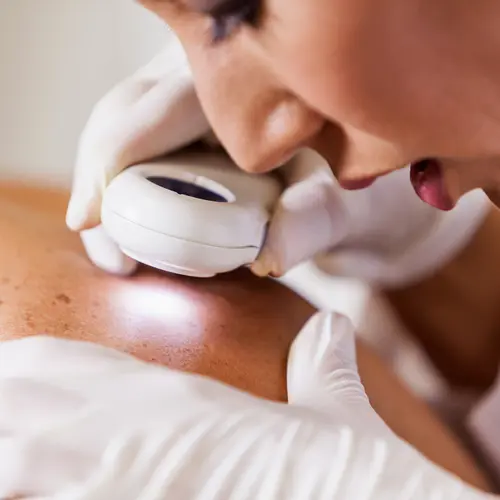If you have fair skin or you’ve spent lots of time in the sun, it’s a good idea to ask your doctor if you should get regular skin cancer screenings.
These visual checks by your regular doctor or a dermatologist can help find skin that could be cancer or might turn into it someday. That’s important because skin cancer is the most common type of cancer, but it’s also one of the easiest kinds to treat if you catch it early.
Before Your Exam
It’s a good idea to look over your skin yourself before your appointment so you can point out anything that seems odd.
Check every part of your skin, including your scalp, behind your ears, under your arms, and between your buttocks. A full-length mirror and a hand mirror can help you see hard-to-reach places. You’ll want to note any moles or growths that:
- Are new
- Have changed over time
- Itch
- Bleed
What Happens During a Skin Cancer Full Body Exam?
The screening usually takes 10 minutes, or longer if the doctor sees any moles that look unusual. You’ll take off all of your clothes and put on a medical exam gown. Your doctor will ask if you have any moles that concern you. Then, they will then look at every inch of your body -- from your face, chest, arms, back, and legs to less-visible places like your scalp, between your toes, and the soles of your feet.
What the Doctor Is Looking For
During a skin cancer screening, your doctor is checking for the “ABCDEs” of each mole, which are all possible signs of skin cancer:
- Asymmetry: Not the same shape on both sides
- Border irregularity: Ragged or blurred edges
- Color: Different shades of tan, brown, or black
- Diameter: Larger than 1/4 inch
- Evolving: Changes over time
Your doctor will also check for actinic keratosis, skin changes caused by sun damage that, without treatment, can turn into cancer.
A Mole Biopsy
A visual check of your skin only finds moles that may be cancer. It can’t tell you for sure that you have it. The only way to diagnose the condition is with a test called a biopsy. If your doctor thinks a mole is a problem, they will give you a shot of numbing medicine, then scrape off as much of the mole as possible. You shouldn’t feel pain, only tugging or pressure. They’ll send the sample of your mole to a lab, where a pathologist will check it under a microscope for cancer cells.
If the biopsy shows skin cancer, your doctor will let you know the next steps and what kind of treatments might be right for you. You may want to ask for a second opinion, since it can be hard to tell the difference between a sample that’s not cancerous and one that is.
How Often Should You Get a Skin Cancer Exam?
Experts disagree on this question. Some medical groups say you should only get a screening if you have suspicious moles or you have a high chance of getting melanoma, the deadliest type of skin cancer.
Others recommend a yearly screening for people who are at high risk for skin cancer. A few things make you more likely to get it:
- Blond or red hair, light eye color, and skin that freckles or sunburns easily
- People in your family have had melanoma
- You’ve had unusual moles in the past
- You’ve had sunburns before, especially any that blistered
- You’ve used tanning beds
- You have more than 50 moles or any that look irregular
- You’ve had an organ transplant
Your dermatologist will want to see you twice a year if you’ve ever had basal or squamous cell cancer. After a melanoma diagnosis, you’ll likely see your dermatologist every 3 months for the first year and then twice a year after that.

